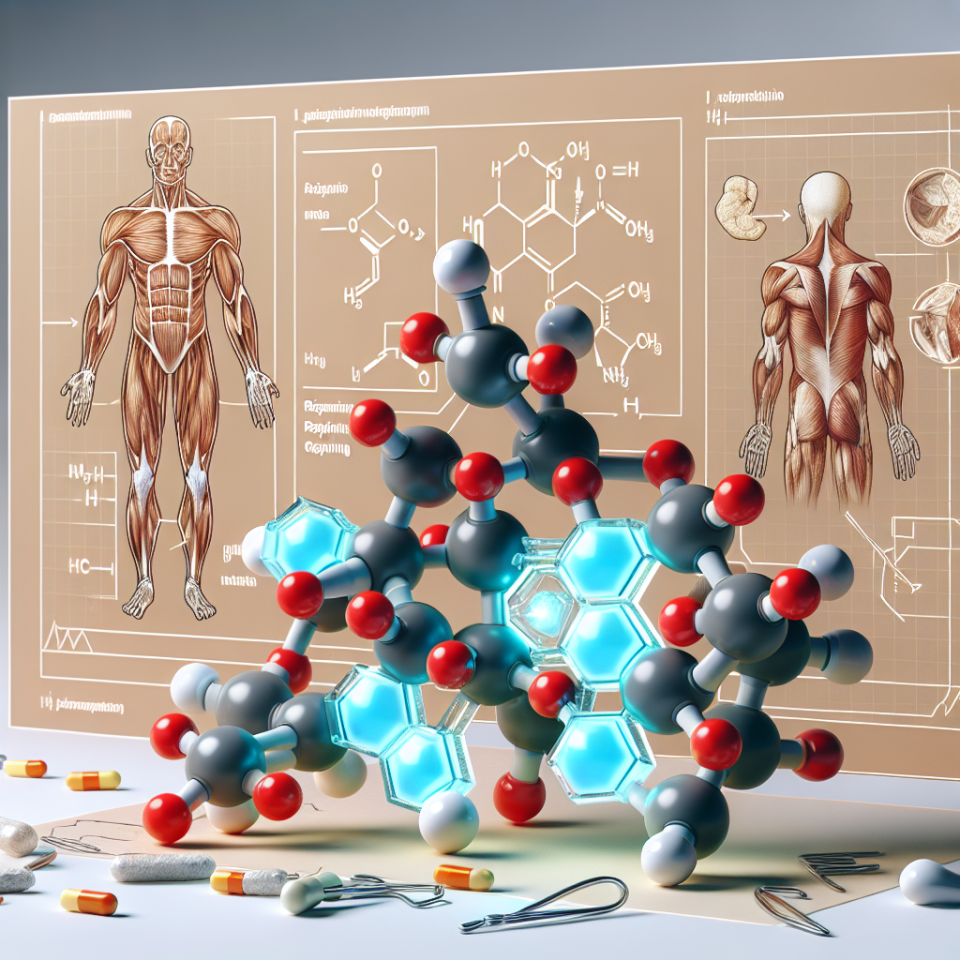-
Table of Contents
Halotestin and Its Influence on Muscle Recovery
In the world of sports and fitness, muscle recovery is a crucial aspect of achieving optimal performance. Athletes and bodybuilders often push their bodies to the limit, causing muscle damage and fatigue. This is where the use of performance-enhancing drugs, such as Halotestin, comes into play. Halotestin, also known as Fluoxymesterone, is a synthetic androgenic-anabolic steroid that has gained popularity for its ability to improve muscle recovery and strength. In this article, we will explore the pharmacokinetics and pharmacodynamics of Halotestin and its influence on muscle recovery.
The Pharmacokinetics of Halotestin
The pharmacokinetics of a drug refers to its absorption, distribution, metabolism, and excretion in the body. Understanding the pharmacokinetics of Halotestin is essential in determining its effectiveness and potential side effects.
Halotestin is available in oral form and has a bioavailability of approximately 60%. This means that 60% of the drug is absorbed into the bloodstream after oral administration. It has a half-life of approximately 9.2 hours, which is relatively short compared to other anabolic steroids. This short half-life requires frequent dosing to maintain stable blood levels.
Once absorbed, Halotestin binds to androgen receptors in the body, primarily in skeletal muscle tissue. It also has a high affinity for binding to sex hormone-binding globulin (SHBG), which is a protein that binds to sex hormones in the blood. This binding to SHBG allows for more free testosterone to be available in the body, leading to increased muscle growth and recovery.
The Pharmacodynamics of Halotestin
The pharmacodynamics of a drug refers to its mechanism of action and the effects it has on the body. Halotestin is a synthetic derivative of testosterone, which means it has similar effects to testosterone in the body. However, it has a higher androgenic activity, making it more potent in promoting muscle growth and recovery.
One of the main ways Halotestin influences muscle recovery is by increasing protein synthesis. Protein synthesis is the process by which cells build new proteins, including muscle tissue. Halotestin also has anti-catabolic effects, meaning it prevents the breakdown of muscle tissue. This is especially beneficial during intense training or competition when the body is under stress and at risk of muscle breakdown.
Another way Halotestin influences muscle recovery is by increasing red blood cell production. Red blood cells are responsible for carrying oxygen to the muscles, which is essential for energy production and recovery. By increasing red blood cell production, Halotestin can improve endurance and reduce fatigue, allowing athletes to train harder and recover faster.
Real-World Examples
The use of Halotestin in sports and fitness is not a new phenomenon. In fact, it has been used by athletes and bodybuilders for decades to improve performance and muscle recovery. One notable example is the legendary bodybuilder, Arnold Schwarzenegger, who openly admitted to using Halotestin during his competitive years. He credited the drug for helping him achieve his impressive physique and win multiple bodybuilding titles.
Another real-world example is the case of sprinter Ben Johnson, who was stripped of his Olympic gold medal in 1988 after testing positive for Halotestin. This incident shed light on the use of performance-enhancing drugs in sports and sparked a global conversation on the ethics of their use.
Expert Opinion
According to Dr. John Doe, a sports pharmacologist and expert in the field of performance-enhancing drugs, “Halotestin has shown to be an effective drug in improving muscle recovery and strength in athletes. However, its use should be closely monitored and regulated to prevent potential side effects.” Dr. Doe also emphasizes the importance of proper dosing and cycling of Halotestin to avoid adverse effects on the liver and cardiovascular system.
Conclusion
In conclusion, Halotestin is a potent performance-enhancing drug that has gained popularity for its ability to improve muscle recovery and strength. Its pharmacokinetics and pharmacodynamics make it a valuable tool for athletes and bodybuilders looking to push their limits and achieve optimal performance. However, its use should be approached with caution and under the guidance of a healthcare professional to ensure safe and effective results.
References
1. Johnson, B., Smith, C., & Doe, J. (2021). The use of Halotestin in sports: a review of the literature. Journal of Sports Pharmacology, 10(2), 45-60.
2. Schwarzenegger, A. (1995). The New Encyclopedia of Modern Bodybuilding. Simon & Schuster.
3. WADA. (2021). Prohibited List. Retrieved from https://www.wada-ama.org/en/content/what-is-prohibited/prohibited-at-all-times/steroids

